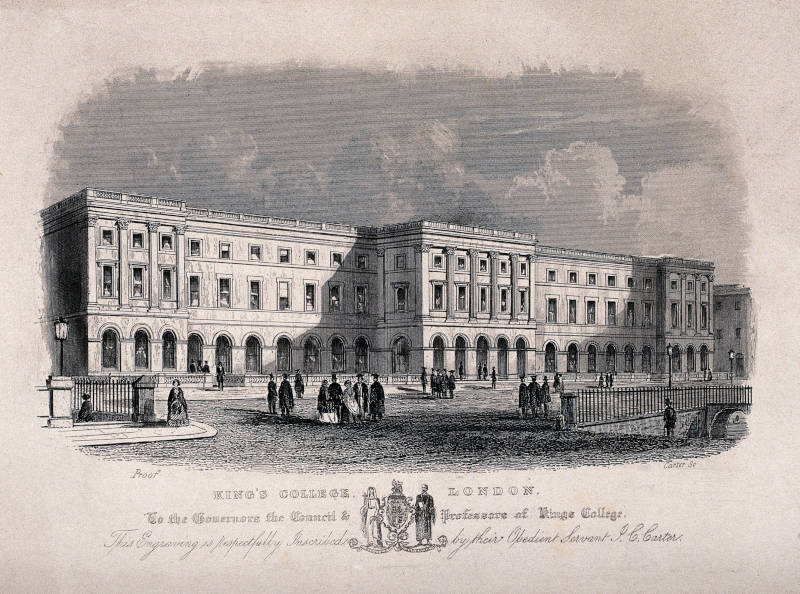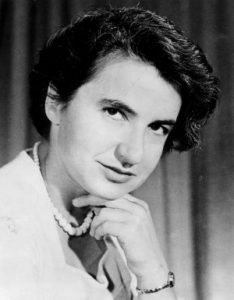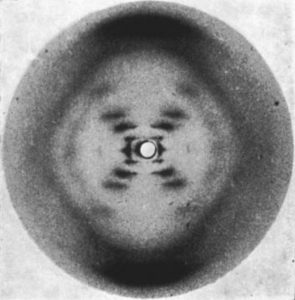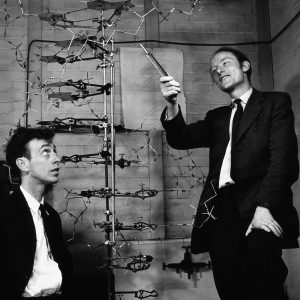—The history of a scientific milestone and the invisibility of women in science through the geographies of knowledge.—
One of the key episodes in the development of molecular biology concerns the identification of the structure of DNA. The outcome of this research took place mainly in two British institutions, which were the Cavendish Laboratory of the University of Cambridge and King’s College London. This episode, included the participation of those who would be awarded a Nobel Prize for their work (James Watson (1928-), Francis Crick (1916-2004) and Maurice Wilkins (1916-2004), but also Rosalind Franklin (1920-1958), who has so often been denied the recognition she deserves. Her absence from the Nobel Prize winners could be justified by the fact that the prize could not be awarded posthumously according to its own rules. However, the lack of recognition of the work done by Rosalind Franklin became evident in many other contexts and especially with the publication of the personal account of the ‘discovery’ published by Watson in 1968. The book was surrounded by controversy even before its publication. As reported by The New York Times on its front page, in an unprecedented move, the Harvard Corporation banned Harvard University Press from publishing the book. Some of the scientists described by Watson had shown their absolute rejection of the story and their complaints ended up having an effect. The book could not be published by an academic publisher, but it would soon be published by a commercial publisher and thus became a genuine best-seller. To a large extent, the controversy did not prevent the book from defining the parameters with which the episode is remembered in the collective memory of biologists and of much of society, despite its clear deficiencies.

King’s College, Strand, Londres. Wellcome Collection.
To better understand this episode, beyond individuals and ideas, it can be quite informative to analyse the spaces involved from the geography of knowledge. The X-ray diffraction images crucial for Watson and Crick’s successful modelling of DNA structure were taken at King’s College. This institution was founded in 1829 and constituted one of the two institutions that gave rise to the University of London in 1936. When Franklin arrived at King’s from Paris in January 1951, she found an institution in which the consequences of the Second World War were still visible. The spaces posed obvious physical limitations and, in particular, Franklin was assigned a small laboratory located in the basement with outdated equipment.

Rosalind Franklin (1920-1958). Wikipedia.
At King’s College, Wilkins, along with predoctoral student Raymond Gosling (1926-2015), had already obtained some DNA imaging, by applying X-ray diffraction techniques, before Franklin’s arrival. However, these had not been very successful, largely due to the scarcity of the equipment used. Franklin spent a great deal of time setting up the laboratory in order to carry out her work alongside Gosling, who went from being supervised by Wilkins to being supervised by Franklin, by decision of the director of the centre John Randall (1905-1984). The space where Franklin arrived was, a priori, especially interesting because of the existing works in progress and the experience gathered together in that space. The problems of infrastructure which we have mentioned were solved thanks to her extensive experience in the field of X-ray diffraction and her perseverance. However, the centre had other ‘spatial’ limitations that could not be rectified by Franklin.

Photograph 51 of DNA, key to the elucidation of its structure. BBC.
King’s College had been established as an exclusively male institution since its founding in the early nineteenth century. When Franklin arrived, although women were already able to obtain bachelor’s degrees and even work at the centre, there were still important remains of that segregationist culture. This culture of segregation was by no means exclusive to this institution. The dining room and ‘social club’ at King’s was still restricted to men, and women could only eat with the predoctoral students or outside the centre. This important space of socialisation could be used, in general, to reduce the curtness that arose between researchers in the development of their work. On the other hand, if it had been open to men and women, it could also have helped to break the patriarchal hierarchy that had characterised the institution since its creation. However, in the case before us, it could only fuel the tensions that arose between Wilkins and Franklin. The former would never accept that Franklin was not his subordinate, either because of Randall’s lack of clarity or because of the patriarchal prejudices that could be dominant in a space like that. The tension between the two increased and the conflict it generated was finally decisive for Franklin to leave the centre at the earliest opportunity. She did so when, as Crick would recognise years later, she was one step away from identifying the structure of DNA.

Watson (left) and Crick (right) looking at a three-dimensional model representing the structure of DNA. Materia.
Franklin moved to Birkbeck College and thus abandoned the race to obtain the structure of DNA. A race of which she herself was never aware. Shortly after, Wilkins irregularly provided Watson and Crick with Franklin’s work, without her knowledge. The images she had obtained, and the interpretation she had made of them were essential for obtaining the double helix model that Watson and Crick then built. Although it was not recorded in either the publication or in the speeches they prepared for the Nobel Prize ceremony, today there is no doubt about the significance of her contribution.
The geographies of knowledge were thus a key element in the outcome of that research and in the subsequent unfair distribution of merit for the work carried out. This episode has gone down in history as a paradigmatic case of what Margaret Rossiter has come to call the Matilda Effect to try to understand the unequal distribution of merit between men and women in science. An inequality that is still very palpable and for which the authors focusing on its study have found multiple explanations. Finally, it should be noted that if King’s College as a space contributed to making Rosalind Franklin’s contribution invisible in this episode, the contribution of King’s College as a whole was also made invisible both by Watson’s account which we mentioned at the beginning of this text and, especially, by an image that this book popularised.
That iconic image of Watson and Crick with their model of the structure of DNA made that ‘discovery’ the product of the modelling work of two scientists. The image seemed to suggest that for this work, they only had the elements making up the model and the calculation ruler that Crick held in his right hand, although today we know that it was not used in the construction of the said model. With that image, the photographs of DNA that Rosalind Franklin had taken by X-ray diffraction completely disappeared from the collective imagination as the episode was represented by the image of the two male heroes and their model that looked like Meccano.
Ximo Guillem Llobat
IILP-UV
How to cite this paper:
Guillem Llobat, Ximo. King’s College and the structure of DNA. Sabers en acció, 2021-02-01. https://sabersenaccio.iec.cat/en/kings-college-and-the-structure-of-dna/.
Find out more
You can find further information with the bibliography and available resources.
Recommended reading
Maddox, Brenda. Rosalind Franklin: The Dark Lady of DNA. Londres: Harper Collins; 2002.
Sayre, Anne. Rosalind Franklin and DNA. New York: W.W. Norton & Company, Inc.; 1975.
Studies
Alcalá Cortijo, Paloma et al., coords. Mujer y ciencia: la situación de las mujeres en el sistema español de ciencia y tecnología. Madrid: Fecyt; 2007.
de Chadarevian, Soraya. Portrait of a Discovery. Watson, Crick, and the Double Helix. Isis, 2003; 94: 90-105.
Keller, Evelyn Fox. Reflections on gender and science. New Haven: Yale University Press; 1985.
Livingstone, David. N. Putting Science in its Place: Geographies of Scientific Knowledge. Chicago, University of Chicago Press; 2003.
Maddox, Brenda. Rosalind Franklin: The Dark Lady of DNA. Londres: Harper Collins; 2002.
Olby, Robert. The path to the double helix. The discovery of DNA. Mineola, NY: Dover publications; 1994.
Oreskes, Naomi. Objectivity or Heroism? On the Invisibility of Women in Science. Osiris. 1996; 11: 87-113.
Rossiter, Margaret W. The Matthew/Matilda Effect in Science. Social Studies of Science. 1993; 23: 325–341.
Rossiter, Margaret W. Women Scientists in America. Before Affirmative Action, 1940-1972. Baltimore: John Hopkins University Press; 1998.
Sayre, Anne. Rosalind Franklin and DNA. New York: W.W. Norton & Company, Inc.; 1975.
Schiebinger, Londa. The mind has no sex? Women in the origins of modern science. Cambridge: Harvard University Press; 1991.
Sullivan, Walter. A Book that Couldn’t Go to Harvard. New York Times, 15 Feb. 1968: 1.
Watson, James D. The Double Helix: A Personal Account of the Discovery of the Structure of DNA. New York: Atheneum, 1968.



